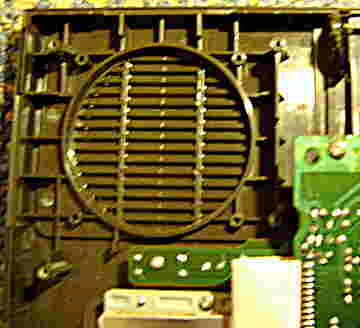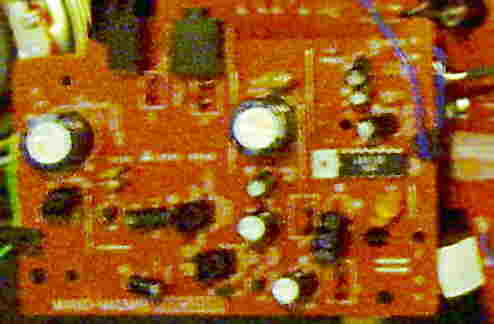| CASIOMT-88 | keyboard with key lighting, ROM-Pack & analogue rhythm |
This keyboard from 1987 has a key lighting feature ("melody guide") with music stored on ROM-Pack cartridges.
Unlike with modern such keyboards, not the keys itself but a row of tiny LEDs above the keys flash up to teach keyboard playing. It has analogue percussion an nice sound, although the sound quality is lower than its (technically far more complex) ancestor Casio MT-800. In opposite to earlier ROM-Pack keyboards it has not only a melody guide, but also a chord guide feature, that teaches to play fingered chords.
 |
 |
 |
 |
Most preset sounds of the MT-88 are bright or even a bit harsh, but not necessarily in a negative sense. The "piano" sounds quite realistic, the harpsichord a little grainy. The vibraphone is made from plain squarewave with chorus effect; its vibrato gets the faster the higher notes are played (although this is no sample). The "pipe organ" has a dose of chorus and sounds a bit harsh and rather accordion- like. The "jazz organ" is a sort of Hammond imitation which percussive attack phase rapidly turns duller and then sounds a little hollow in the bass range. The "flute" sounds realistic and has vibrato, while "strings" sound rather harsh and uses beside vibrato also a chorus effect. The "synth sound" is a harsh and buzzy electronic organ timbre with fast attack phase. The "clarinet" has some vibrato and sounds ok. The "violin" has chorus and sounds rather harsh, thin and unrealistic (Casio VL-1 had a much better one). The "reed" is another bright tone with chorus and fast attack rate. (Both resemble somewhat sounds on small Casio ToneBank keyboards.). The "celesta" sounds a little harsh and resembles in the bass range a distorted harp, because in the release phase of short bass notes apparently the duller one of both subvoices fades silent sooner. All preset sounds contain a short sustain that prevents to play extremely short notes.
Unlike its crippled ancestor Casio MT-800, the fingered chord mode of the MT-88 fortunately accepts non- chord key combinations again. Its organ chord mode (without rhythm) uses always a grainy squarewave brass timbre. The accompaniments of the rhythms add a decay envelope to it and thus turns it into an e-bass.
The key lighting of the MT-88 behaves modern and thus lacks the flaws and glitches of the MT-800 and has the same walking light like Casio PT-80 etc. (but no start-up jingle). Also the 4 modes (with/ without waiting, with/ without light) are present. New with this instrument is that beside the normal melody guide key lighting (to teach monophonic melody play) it also features chord guide. In this mode in the chord section of the keyboard flash 3 LEDs to train fingered chord play. For the correct timing a walking light moves from right to left in the melody section and the player has to play the chord at the moment when this light reaches an arrow mark. (The melody voice plays automatically.)
My Casio MT-88 came with the default ROM-Pack RO-554 "Family Songs". This cartridge has only 6 (partly short) songs, which is hard to understand since my MT-800 from 1983 was shipped with a 15 full- length song cartridge and the cost of ROM memory did not rise but fall over time.
A stereo variant of the MT-88 was released (earlier?) as Casio
MT-820. This one had additional cinch output jacks and a "stereo chorus"
switch next to the sustain switch, but its hardware class was likely the
same like MT-88 and had only an additional stereo chorus circuit. (I asked
an eBay vendor of the MT-820, because my Casio
MT-45 and MT-60 are also
unequal twins with totally different hardware inside despite similar case.)
A fullsize keyboard without ROM-Pack (49 keys, mono) based on this hardware
was the Casio CT-350 and also the midsize MT-55 (44 keys, no ROM-Pack,
case like Casio MT-28)
was based on it (seen on eBay). A cheaper variant of this hardware
(without sequencer) was used in Casio PT-100
and MT-28.
| removal of these screws voids warranty... | ||
 |
||
|
|